


Role: Instructional Designer / Author
Customers: Logical Operations, Element K, Pearson Publishing, Barnesandnoble.com, SmartPlanet, Army Medical Department (AMEDD), NORAD/US Northern Command, Others
Requirement: Develop a library of training materials to support instructor-led training, web-based, and mobile distance learning. Interview subject matter experts and convert existing documentation into instructional materials. Design, write, and storyboard content for media such as training manuals, interactive assets (for hybrid courses), video, simulations and learning games, practice activities, assessments, PowerPoint slides and data files, quick reference cards, and instructor notes.
Deliverables
Authored instructor-led and web-based asynchronous distance learning courses for a variety of customers. Content areas have included:
Additional Assets
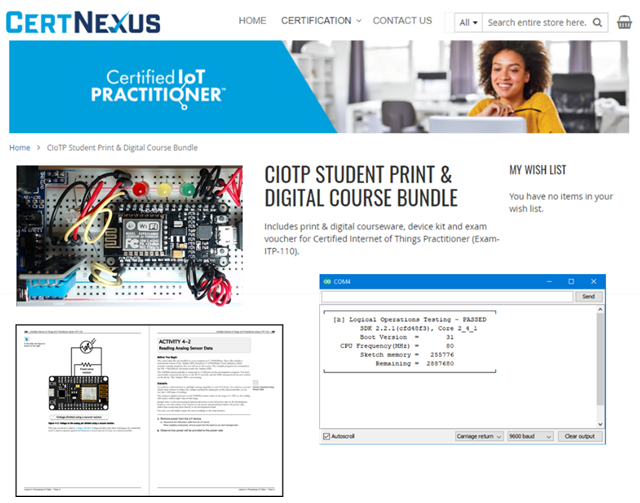
Role: Course Developer
Customer: Logical Operations
Requirement: Provide resources that will provide students with hands-on learning opportunities focusing on the Internet of Things, including topics such as the challenges of configuring lightweight computing devices and keeping them secure, and supporting the transfer of telemetry data from sensors to other devices for collection and processing. Keep the kit cost low (target of $20 for components) while avoiding vendor lock-in and potential supply chain problems.
Deliverables

Roles: Web Application Developer, Graphic Designer / Media Developer
Customer: Schneider Electric
Requirement: Our team had already developed various product portal web sites for Schneider employees and customers to learn about their electronic products, depicted in various commercial and industrial contexts. The customer wanted a way to connect all of the product sites in a "virtual city" and to have a means for Schneider employees to update content on all of the web sites.
Deliverables

Role: Product Manager
Customer: John Wiley & Sons, Higher Education Division
Requirement: Produce a new line of higher education distance learning courseware that provides modular content design, authoring tools, ability to export to various Learning Management Systems formats such as SCORM 1.2 and WebCT, enables students and instructors to work offline as needed, provides performance-based navigation, contextual note-taking, progress tracking, and integration with learning management systems.
Deliverables

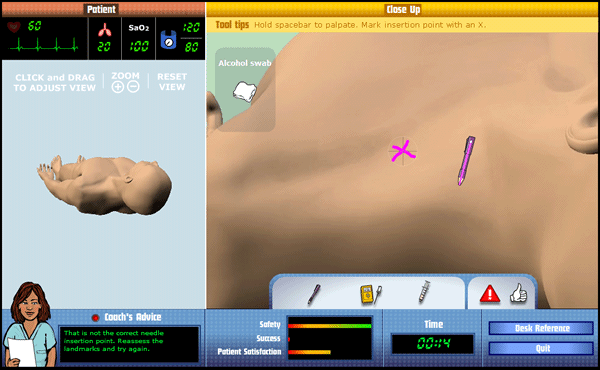
Roles: Simulation Technical Lead, Programmer, Graphic Developer
Customer: U.S. Air Force
Requirement: Produce a game/simulation platform for training medical practitioners on anesthetic procedures. The training covers cognitive skills to be provided through a web-based simulation game, and psychomotor skills, to be provided through a haptic simulator developed by a subcontractor.
Deliverables

Wireframe illustration (preliminary design sketch) for the simulation layout

Example question in GK “Blues” Theme
Roles: Multimedia Programmer, Graphic Designer
Customers: Global Knowledge
Requirement: Develop a library of reusable assets that can be “re-skinned” with a different “look and feel” to facilitate inexpensive and efficient customization for different customers.
Deliverables

Example question in “Sea Glass” Sample Theme

Roles: Multimedia Programmer, Instructional Designer, Animator / Illustrator, User Interface Designer
Customers: Ziff-Davis Education / Element K, Global Knowledge, Bristol-Myers Squibb, Sara Lee, Others
Requirement: Develop software application demonstrations, simulations, animations, and videos by capturing screen elements, creating digital illustrations, rendering 3D models, capturing and editing video. Add scripted behaviors to provide interactivity.
Deliverables
Development tools have included Adobe Creative Suite, Ray Dream 3D, Poser 3D, and various other e-learning authoring tools, such as Captivate, Articulate, and others.

Full screen video player showing minimalistic user interface.
Roles: Multimedia Programmer
Customer: Synaptis
Requirement: The customer wanted a reusable framework for a series of soft skills training videos that would be released on CD-ROM and hosted on a website. The user interface had to be generic so as not to require re-branding for different customers, and it had to offer a simple means to aggregate multiple videos and enable them to play as though they were a single video, with navigation between video segments provided through a menu.

Navigation menu accessible from the title.
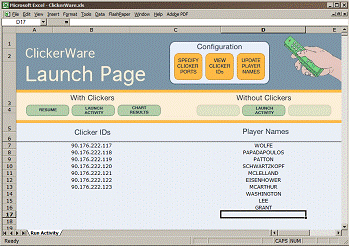
Registering participants at the start of the session.
Roles: Instructional Design (front-end analysis and concept), Software Developer
Customer: NORAD / U.S. Northern Command
Primary Development Tools / Languages
Requirement: The customer wanted to provide an engaging seminar experience for officers exploring a response to domestic terrorism and disaster scenarios. Previously, these activities had been conducted in a seminar setting, using PowerPoint slides to lead discussion. Class Response Systems (or "clickers") are typically used in college classrooms, so I applied the clicker concept to branching simulation exercises conducted by NORAD/USNORTHCOM.
At each decision point in the exercise, several possible actions were listed, and participants used the clickers to choose what they felt was the best response. After all participants voted, a histogram (bar chart) was shown, representing the spread of choices. After discussion, the group agreed on one of the choices to branch to the resulting scenario (a Flash movie) and the next decision point. Participants' responses were collected in an Excel spreadsheet for charting and analysis.
Although we authored the first branching exercise, the customer wanted the capability to modify or add content later on, so we provided a complete authoring system based on Microsoft Office, using Visual Basic for Applications to integrate the tools and generate courseware files (HTML, JavaScript, and XML). Clickerware addressed the need to engage all participants and capture group decisions for later analysis.
Deliverables
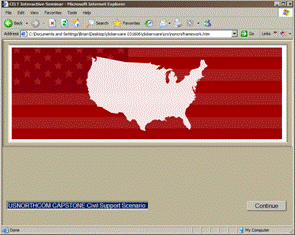
Opening screen of video-based branching interactive exercise, with space reserved for player responses.
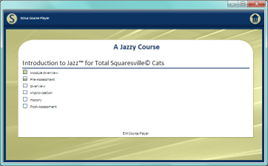
SOLA player progress tracking view
Role: Software Developer
Requirement: This project was not prompted by a customer need. I developed this after-hours as the successor to the SCORM Debugger tool that I had created earlier. Unlike my SCORM Debugger, SOLA enabled me to test SCORM courses running from a web server (HTTP) rather than using local file protocol. By creating a totally self-contained web server and LMS running as a local desktop application, I reduced my testing cycle. I no longer had to upload files to a web server to test them running over HTTP. As I used the tool, it occurred to me that it had most of the elements of a course player that could be used to deliver courses on a CD-ROM while providing robust course tracking capabilities such as what would be available from an LMS. So I added offline course player features to the application. I never released this as a commercial product, although I have used it extensively as a testing tool.
Deliverables

eLearning course running in SOLA player
Role: Software Developer
Customer: Global Knowledge
Requirement: Develop an IMS/AICC packaged learning object that can be deployed on an LMS to provide detailed information about the LMS’s capabilities and detailed information that might be helpful for content integration and extending LMS capabilities.
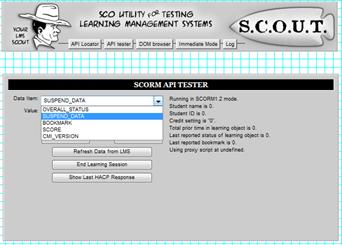
Deliverables
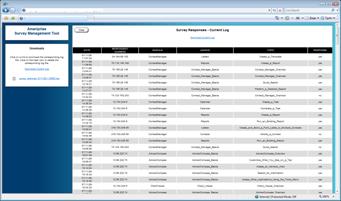
Role: Software Developer
Customer: Ameriprise Financial
Requirement: Provide a simple course evaluation mechanism that can be integrated easily into e-learning courses developed by a variety of vendors. Data must be in a form that can easily be downloaded and aggregated into an Excel spreadsheet.
Deliverables
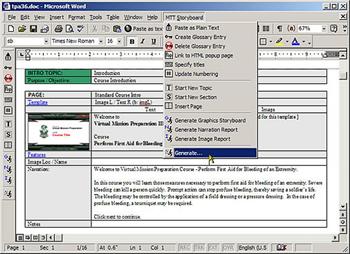
Role: Programmer
Customers: Various
Requirement: Develop custom course authoring tools to generate courseware directly from e-learning course storyboards.
Deliverables
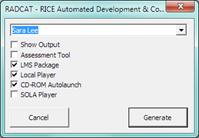
E-learning course generation options include CSS-based user interface themes and custom branding
Role: Programmer
Customer: Global Knowledge
Requirement: Develop a standard programming interface for e-learning courses so the same course can play with progress tracking, scoring, and bookmarking on learning management systems supporting different tracking protocols (e.g., AICC, SCORM) without requiring re-programming or other modification.
Deliverables
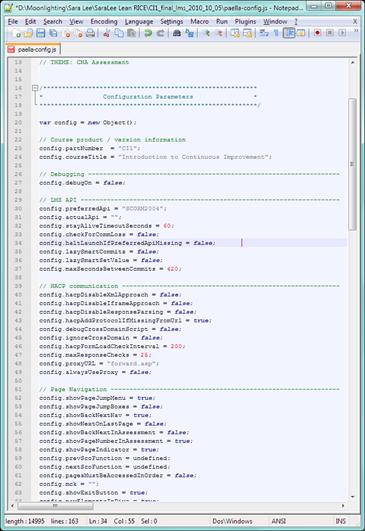
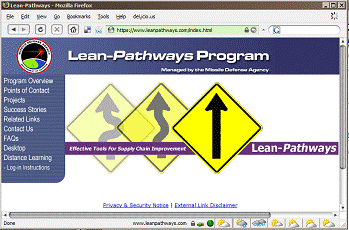
Roles: Instructional Designer, Scripter / Process Automation Developer
Customers: U.S. Office of Naval Research, U.S. Missile Defense Agency
Requirement: The customers wanted to reduce production cost and improve quality of products produced by Department of Defense weapons systems manufacturing prime contractors, who produced an estimated 65 to 80 percent of parts and components in the U.S. defense systems supply chain.
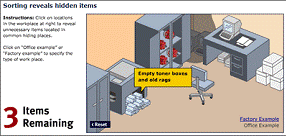
Deliverables
Sample program results include:
Additional project details are available at https://www.leanpathways.com/
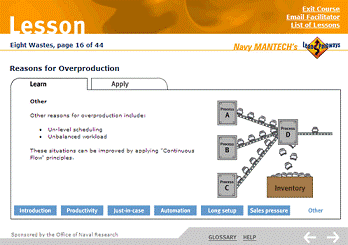
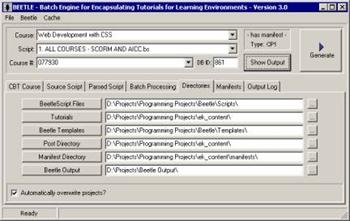
Role: Software Developer
Customer: Ziff-Davis Education
Requirement: Produce a software tool to automate conversion of e-learning course content for various delivery platforms, learning management systems, and course packaging formats.
Deliverables
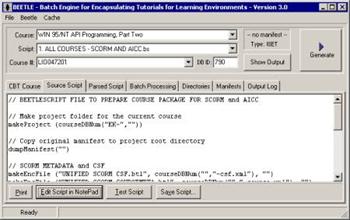
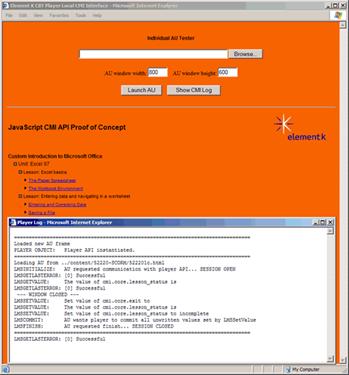
Role: Software Developer
Customer: Element K
Requirement: Analyze and debug runtime communication of learning objects.
Deliverables
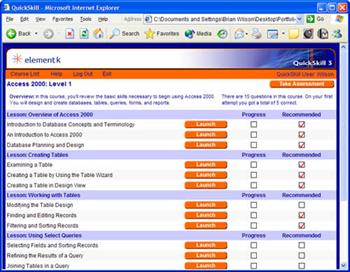
Role: Software Developer
Customer: Element K
Requirement; Produce a browser-based personal e-learning environment through which learners can launch and track SCORM-conformant e-learning content without being online. This platform has been used to deliver e-learning content to customers of Element K, Gateway Computer, Micron, BestBuy, New Horizons, and others.
Deliverables
Roles: Manager of New Product Development, Instructional Designer
Customer: Ziff-Davis Education
Requirement: Develop a cost-effective alternative for producing e-learning courseware. LearnItOnline consisted of web-based self study tutorials. Applications (such as Microsoft Word or Excel) were presented on the Web page as a simulation. Within the simulated application, learners would perform tasks in step-by-step fashion as the narrator prompted. Feedback was provided when learners didn't perform tasks correctly.
Another company produced simulations for us using their proprietary development tools and browser plug-in, which was optimized for producing software simulations. However, it was slow to produce content with that technology, and very expensive.
When Shockwave for Director was introduced, we developed a production toolkit based on Director, which enabled us to produce courseware that was faster to download, more robust, and much less expensive to produce. Using Director, we brought production completely in-house.
Deliverables
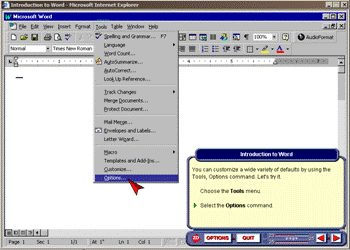
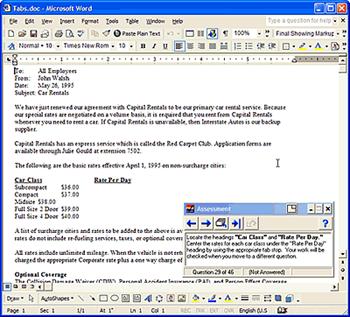
Roles: Manager of New Product Development, Software Architect, Programmer, Assessment Author
Customer: Ziff-Davis Education
Requirement: Authentic assessments evaluate students by having them actually perform real-world tasks, rather than having them answer questions such as multiple choice or true-false. They are generally considered to provide a better evaluation of a student's ability to actually perform a task. The challenge for this project was to develop a tool to deliver computer skills assessments for common productivity applications such as Microsoft Word, Excel, Lotus Notes, and so forth.
The product had to provide authentic assessments within the actual software environment and provide a comprehensive library of pre-written assessment tasks, which course authors could build upon. The product also needed to include all of the authoring tools necessary to customize and add to the library of assessments and be deliverable to learners via disk, network, or as an email attachment.
Deliverables
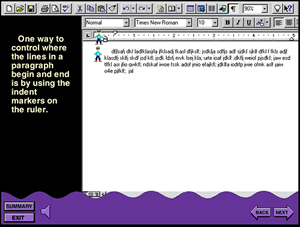
Roles: Manager of New Product Development, Software Architect, Content Author, Instructional Designer
Customer: Logical Operations
Requirement: Develop hybrid-learning product features to differentiate the company’s instructor-led training materials from competitive products.
Deliverables